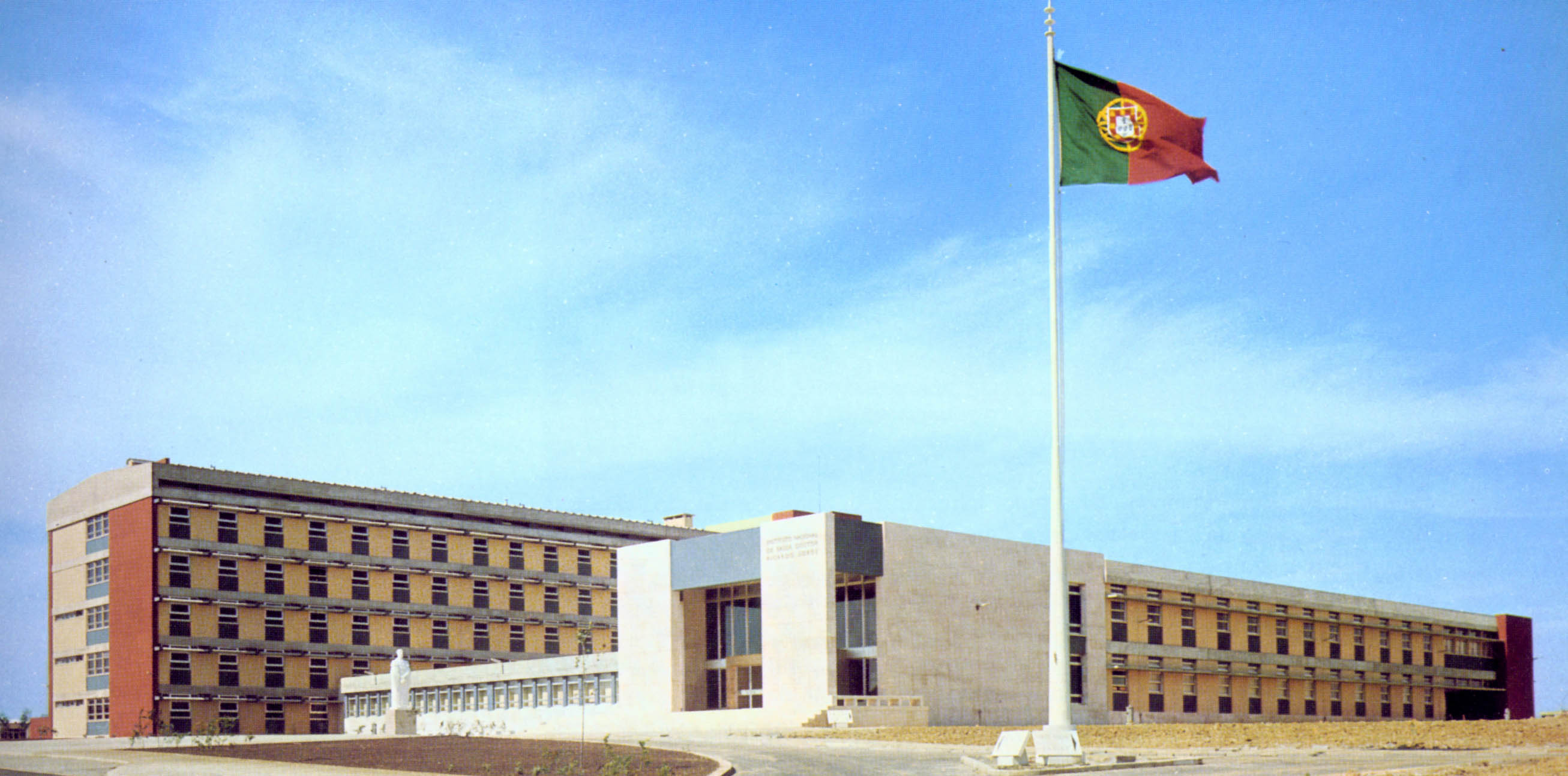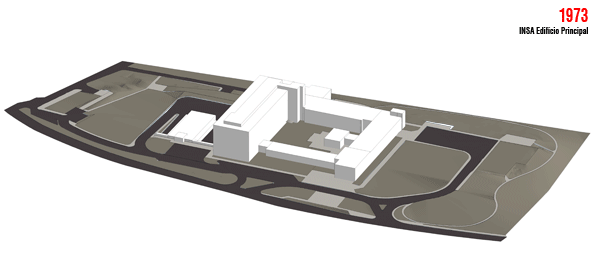Since it was founded in 1902, by Ricardo Jorge, the Institute has worked in extremely precarious conditions in a cramped and old building, located in Campo de Santana, Lisbon. An increase of the Institute’s duties, made way to the creation of new facilities to host the Institute expansion.
The program established involved a large and diversified number of premises, involving, amongst others, laboratory functions with high level of expertise, a public health center, study offices, and, moreover, an element that embraced education.
Our design was based on the assumption that the entire laboratories’ structure should be adjusted in the two respective orthogonal directions, according to a proper proportion of the work posts and accounting an equally modulated distribution of the complex technical networks facilities, which would be essential to them.
We must mention the support received provided by the specialist in laboratory affairs of the World Health Organization, who, in the summer of 1966, at the invitation of Portuguese Government, did an analysis of the first studies of the new premises of the Institute, Sir Graham Wilson. This renowned technical immediately concurred with our way of facing the issues, commenting on his thorough final note that “the outline plan of the new building is, not only attractive, but also interesting, and the architect should be congratulated for its unique and excellent creation”.
The Laboratory Services were located in a single element, since these facilities determine the dimension of the resistant structure. Accordingly, having chosen the placement of the benches in a perpendicular position to the facades, the dimension and space between themselves defines a structural module, to which all the remaining elements are combined.
A 3,50m longitudinal modulation was chosen, allowing the estimation of benches within 0,70 m to 0,80 m depth, achieving between themselves, an interval space suitable for, not only people to permanently work, but also for a third person to freely transit through the remaining space. In the cross-cutting direction, the structure defines three spaces, being the extremities reserved to the laboratory rooms, and the central one to the accommodation of a “main element” (where compartments such as cold storage room, freezers rooms and centrifuges, etc., will be located, which use will be shared by each floor) and to the longitudinal circulation corridor.
Owner:
National Buildings and Monuments’ Managing Bord
Location:
Av. Padre Cruz
Lisbon
Construction Area:
18.000m²
Project:
1968/69
Conclusion:
1972
Program:
Building hosting national services relating to public health, covering specialized laboratories, supporting vivariums, study offices, a lab for teaching purposes, etc.
Team:
Architecture
– António Pedro Batista Pardal Monteiro – Architect
– José Oliva Martins de Carvalho – Architect
– Eduardo Rebelo de Andrade – Architect
– Rodrigo Moutinho
Foundations and Structure
– Pedro Kopke Pardal Monteiro – Engineer
Mechanical Equipment and Facilities
– Electroconsul
Water and Sewage Equipment and Facilities
– Electroconsul
Electrical and Telecommunications Equipment and Facilities
– Electroconsul
Landscaping
– Gonçalo Ribeiro Teles – Landscape Architect





